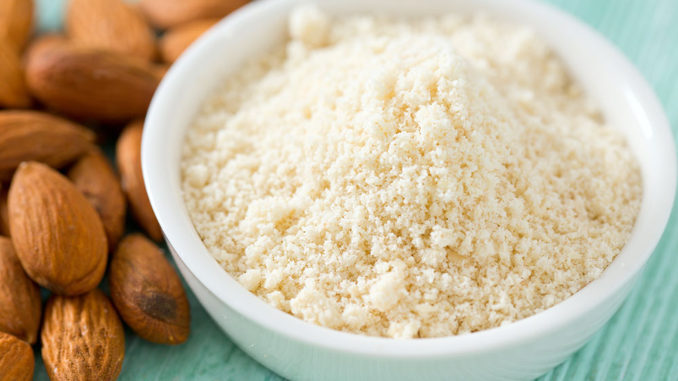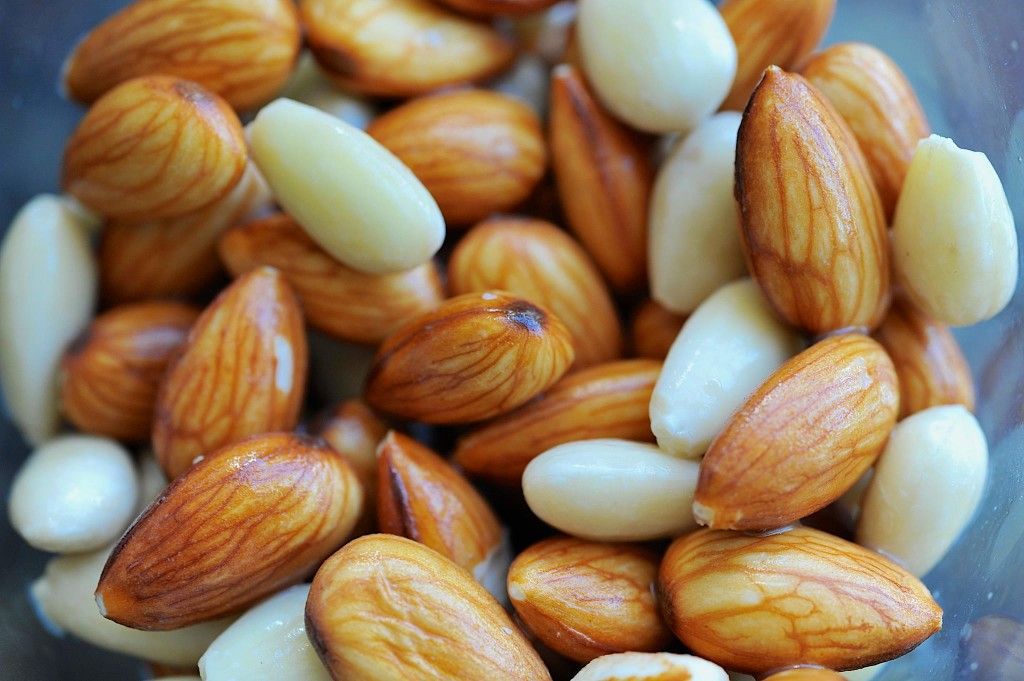
Almond flour is a high protein, mineral-rich nut flour that is a must-have on your foods list when you are on a ketogenic diet or a gluten-free diet. Making almond flour at home is easy and economical, especially when compared to the astronomical prices of store-bought almond flour.
Almond flour is made from blanched almonds from which the skin is removed before grinding them all into fine powder. Almond meal is made by grinding almonds with their skin on.
Soak Almonds Overnight to Neutralize the Toxins
Making almond flour can be as simple as putting 1/2 a cup of almond into a blender and grinding them into fine powder. But these nuts contain certain anti-nutrients and enzyme inhibitors that can create problems in your digestive tract.
It’s best to soak the nuts overnight to neutralize these toxins and this also helps increase the bioavailability of the nutrients in the almonds. Almonds are rich in protein, manganese, potassium, copper, vitamin E, and healthy monounsaturated fats.

So, irrespective of whether you are making almond flour or almond meal, the first step is to soak the nuts, preferably overnight. Remove from water and dry them completely before making the flour.
Skin the Blanched Almonds to Make Almond Flour
To make almond flour, you can add the soaked almonds to a pan of boiling water for about 30 seconds to blanch them. Or you can just pour the boiling hot water into your bowl of almonds and wait for a minute, before draining away the water.
Both methods have the same effect – makes it extremely easy to remove the skin. Pressing on the fat end of the almond is an easy way to skin the almond as the almond just slides out at the other end.

Though almond flour made with skinless almonds is lighter in texture and more even-colored, I recommend making almond meal instead, as these two can be used interchangeably in most recipes.
If the recipe calls for more than a cup of almond flour, then the almond meal may make the baked goods too dense. But for all recipes that call for almond flour under one cup, use almond meal as this flour is made from almonds that have the skin.
Almond Has Amazing Health Benefits

Almond skin is rich in flavonoids, so the almond meal is considered healthier than almond flour. This study published in the Journal of Nutrition identified 20 powerful antioxidant flavonoids in almond skin.
The brown skin of almonds promotes good bacteria in the gut, thus helping the digestive process. The almond skin is particularly rich in dietary fiber (12%), most of which is an insoluble fiber that aids in digestion.
Homemade Almond Flour Recipe

Ingredients:
- Almonds -1 to 2 cups
- Warm water
You can use as many almonds as you want. But keep in mind that the almond flour has a short shelf life and goes rancid within a few months. It’s so easy to make, so I suggest you make just a few cups at a time.
Method:
- Soak the almonds in warm water and keep for 8 hours or overnight.
- Drain the water from the almonds.
- Peel the skin from the almond, if you wish to do so.
- If the skin is not very easy to remove, pour some boiling water into the bowl of almonds and keep for a minute. Now drain the water away. Skin the almonds.
- Skinned or not, the almonds need to be really dry before you can grind them. so wipe away all excess moisture using cloth or paper towels. Air dry them under a fan or keep them in the sun till they are completely dry. If there is moisture in it, then your flour will become rancid faster.
- Now you can grind it up in a blender to make a reasonably fine powder. Don’t try to make it too fine as this may release the oil from the nuts and you’ll end up with almond butter instead.
- You can seive your almond powder if you want really fine powder, but that usually not necessary for most recipes that require almond flour.
- Store in an airtight container, preferably in the fridge. You can store almond flour for up to 6 months in fridge.
Summary
- Soak the almonds overnight.
- Dry the almonds thoroughly
- Grind the almonds into almond flour.
Simple!
